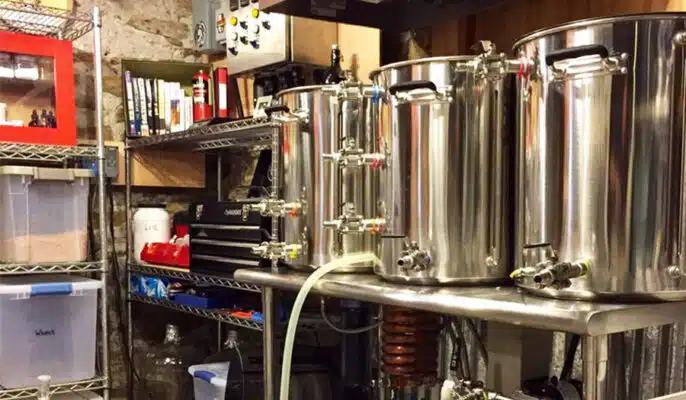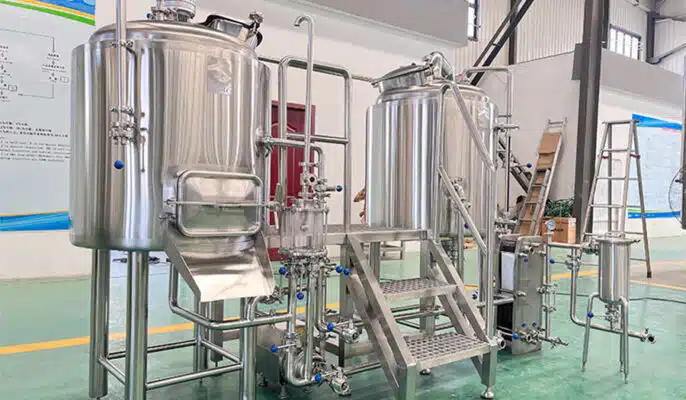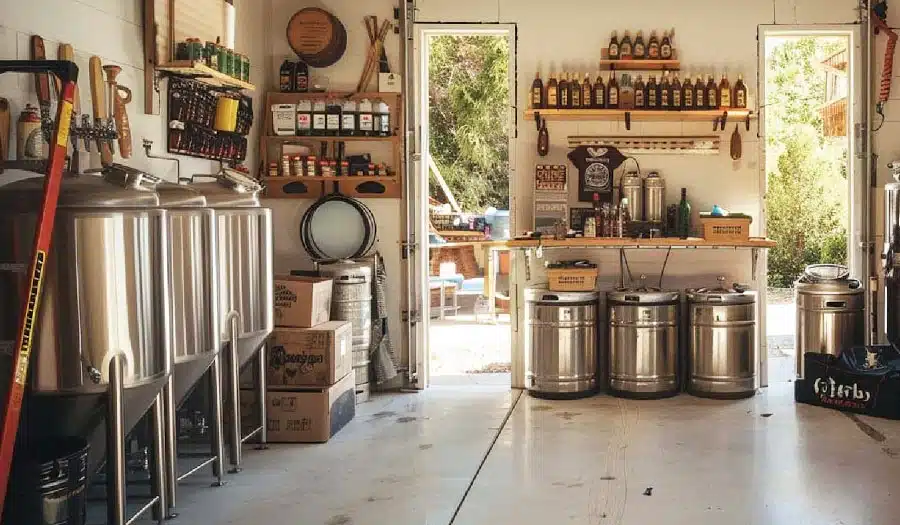Máquinas cerveceras domésticas son cada vez más populares en el sector de la elaboración de cerveza, ya que ofrecen diversas funciones que se adaptan a las preferencias y presupuestos de los distintos cerveceros. Elaborar su propia cerveza, vino u otras bebidas en casa no es sólo un pasatiempo apasionante, sino también un arte que combina creatividad y ciencia. En esta era de creciente cultura del bricolaje, la elaboración casera de cerveza se ha convertido en una opción popular para muchos que buscan bebidas personalizadas. Esta guía le ayudará a comprender los tipos de equipos de elaboración de cerveza casera y a elegir el adecuado, lo que le permitirá embarcarse en su viaje cervecero con mayor eficacia.
El auge de la cerveza casera
En las últimas décadas, a medida que los consumidores buscan cada vez más sabores únicos y de alta calidad, muchos han empezado a explorar el placer de elaborar sus propias bebidas. La popularidad de la cerveza, en particular, ha convertido la elaboración casera en una actividad favorita. El auge de las redes sociales y las comunidades en línea ha proporcionado a los aficionados plataformas para compartir experiencias e ideas, haciendo que la elaboración casera de cerveza esté más extendida. A través de foros, tutoriales en vídeo y redes sociales, los principiantes pueden acceder fácilmente a la información, evitar errores comunes y mejorar sus habilidades cerveceras. Además, el aumento de los concursos de elaboración de cerveza y los eventos de degustación anima a los cerveceros caseros a mostrar sus creaciones e interactuar con otros aficionados.
The rise of home brewing not only reflects people’s pursuit of beverage quality but also embodies a desire for creativity and a personalized lifestyle. With advancements in technology and an abundance of resources, home brewing is sure to attract even more participants in the future, becoming an indispensable part of everyday life.

Tipos de Equipo de elaboración de cerveza casera
Equipamiento básico
- Tanque de fermentación: Los tanques de fermentación domésticos de acero inoxidable son esenciales en la elaboración moderna de cerveza casera, valorados por su durabilidad y eficacia. Estos tanques suelen estar fabricados en acero inoxidable de calidad alimentaria, que resiste eficazmente la corrosión y la suciedad, garantizando que el proceso de elaboración no afecte al sabor y la calidad de las bebidas.
- Hervidor de cerveza: Los hervidores de cerveza tienen capacidades que van desde varios litros hasta cientos de litros, adecuados para diversas escalas de elaboración de cerveza. Los hervidores de acero inoxidable se han diseñado pensando en la funcionalidad y la facilidad de uso, y suelen estar equipados con resistencias, termómetros y dispositivos de agitación integrados para ayudar a los cerveceros a controlar mejor la temperatura y la mezcla. La mayoría de los modelos también incorporan un grifo para trasvasar y filtrar fácilmente el líquido tras la ebullición, lo que simplifica el proceso.
- Enfriador: Un enfriador doméstico es una parte indispensable del equipo de elaboración de cerveza casera, especialmente cuando se elabora cerveza y vino, ya que bajar la temperatura del líquido de forma rápida y eficaz es crucial. La función principal de un enfriador es enfriar rápidamente el líquido tras la ebullición, garantizando que la levadura pueda fermentar a una temperatura ideal, lo que afecta significativamente al sabor final y a la calidad de la bebida.
Equipo auxiliar
- Controlador de temperatura: Un controlador de temperatura ayuda a los cerveceros a controlar y ajustar con precisión la temperatura durante la fermentación. La temperatura influye directamente en la actividad de la levadura y en el sabor final de la bebida, por lo que el mantenimiento de una temperatura estable es clave para el éxito de la elaboración de la cerveza. El uso de un controlador de temperatura puede aumentar significativamente el éxito de la elaboración de cerveza, especialmente durante los cambios estacionales o el clima inestable.
- Equipos de embotellado: El equipo de embotellado desempeña un papel esencial en la elaboración casera de cerveza, ya que ayuda a los cerveceros a trasvasar con seguridad sus creaciones a botellas y garantiza la calidad de la bebida. Ya sean manuales o automáticas, las herramientas de embotellado adecuadas pueden mejorar la experiencia cervecera. El equipo de embotellado adecuado no sólo mejora la eficacia, sino que también garantiza la calidad y la higiene de las bebidas.
- Herramientas de limpieza: Los utensilios de limpieza caseros garantizan la higiene del equipo y los recipientes, evitando la contaminación y la fermentación indeseable. Mantener limpio el equipo de elaboración de cerveza evita eficazmente la contaminación cruzada, reduce la interferencia de bacterias y levaduras silvestres y mejora el éxito de la elaboración y el sabor de la bebida. Además, una limpieza regular puede prolongar la vida útil del equipo, garantizando un proceso de elaboración de cerveza sin problemas.
Tipos de máquinas cerveceras caseras
Existen diferentes tipos de máquinas cerveceras caseras que se adaptan a las necesidades de todo el mundo, desde principiantes hasta cerveceros experimentados, ayudándoles a crear bebidas caseras únicas.
|
TIPO |
DESCRIPCIÓN |
MEJOR PARA |
|
Kegerators |
Unidades refrigeradas diseñadas para almacenar y dispensar barriles de cerveza. |
Quienes deseen almacenar y servir barriles comerciales. |
|
Kits caseros |
Completos kits que incluyen todo lo necesario para elaborar cerveza desde cero. |
Aficionados a la cerveza casera y al bricolaje. |
|
Dispensadores de cerveza |
Máquinas compactas que utilizan cápsulas de cerveza preenvasadas. |
Bebedores ocasionales que buscan comodidad. |
|
Sistemas de elaboración de cerveza "todo en uno |
Sistemas avanzados de elaboración, fermentación y distribución. |
Cerveceros caseros serios y aficionados a la cerveza artesanal. |

Pasos para elaborar cerveza casera
Preparación de materiales
- Malta: Elija la malta adecuada (como cebada o maltas especiales).
- Lúpulo: Se utiliza para potenciar el amargor y el aroma.
- Levadura: Seleccione el tipo de levadura adecuado.
- Agua: Utiliza una fuente de agua limpia.
Herramientas Preparación
- Olla grande
- Cubo de fermentación (con esclusa)
- Termómetro
- Oxímetro (opcional)
- Botellas y tapones
Pasos de la elaboración de la cerveza
1.Preparar el mosto
- Calentar el agua: Calienta el agua a unos 65-70°C.
- Remojo de la malta: Añadir la malta al agua y mantener la temperatura durante 1 hora para extraer los azúcares.
- Filtrado: Separar el mosto de los granos usados para obtener un mosto claro.
2.Ebullición
- Hervir el mosto: Llevar el mosto a ebullición y mantener durante unos 60 minutos.
- Añadir lúpulo: Añade lúpulo en diferentes fases del hervor para conseguir aromas y amargor variables.
3.Refrigeración
Enfríe el mosto: Utiliza un enfriador o agua helada para reducir rápidamente la temperatura del mosto a unos 20-25°C.
4.Fermentación
- Poner la levadura: Vierte el mosto enfriado en el cubo de fermentación y añade la levadura.
- Selle la fermentación: Selle el cubo de fermentación, asegurándose de que la esclusa funciona correctamente para evitar la entrada de aire.
5.Fermentación secundaria (opcional)
Realizar la fermentación secundaria en el cubo de fermentación para mejorar la claridad y el sabor.
6.Embotellado
- Prepare las botellas: Limpie y desinfecte las botellas.
- Añadir azúcar: Añada una cantidad adecuada de azúcar a las botellas para favorecer la fermentación secundaria y la carbonatación.
- Embotellar la cerveza: Verter la cerveza en las botellas, dejando algo de espacio, y taparlas.
7.Envejecimiento
Guarde la cerveza embotellada en un lugar fresco para que envejezca durante unas 2-4 semanas.
8.Disfruta
Enfríe la cerveza y estará lista para abrirla y disfrutarla.
¿Cómo elegir la máquina cervecera casera adecuada?
- Escala: Determina la cantidad de cerveza que quieres elaborar para seleccionar la olla adecuada y la capacidad del cubo de fermentación.
- Materiales: Las ollas de acero inoxidable y los cubos de fermentación de cristal son más duraderos y fáciles de limpiar; los recipientes de plástico, aunque de menor coste, pueden rayarse con facilidad y afectar a su longevidad.
- Accesorios: Asegúrese de que dispone de las herramientas necesarias, como termómetros, esclusas y embudos, para todo el proceso de elaboración de la cerveza.
- Presupuesto: Elige el equipo en función de tu presupuesto; los principiantes pueden empezar con equipos básicos e ir actualizándolos gradualmente.
- Facilidad de uso: seleccione equipos con buenas críticas de los usuarios para asegurarse de que son fáciles de manejar y limpiar, manteniendo una buena higiene.
¿Cómo encontrar el proveedor adecuado?
- Búsqueda en línea: Utiliza los motores de búsqueda para encontrar proveedores locales o en línea de equipos de elaboración de cerveza y examina detenidamente su gama de productos y las opiniones de los clientes para obtener información completa.
- User Reviews: Read customer feedback in-depth, focusing on product quality, after-sales service, and purchasing experience to assess the supplier’s reputation and reliability.
- Recomendaciones de la comunidad: Únase a comunidades o foros en línea para entusiastas de la elaboración de cerveza e interactúe activamente con otros cerveceros para preguntarles por sus proveedores y equipos recomendados.
- Comparación de precios: Compare los precios y las características de los productos de varios proveedores para asegurarse de elegir un equipo con una buena relación calidad-precio que satisfaga sus necesidades.
- After-Sales Service: Understand the supplier’s after-sales support and return policies to ensure timely service and effective assistance for any potential issues after purchase.
PREGUNTAS FRECUENTES
¿Son las máquinas cerveceras caseras adecuadas para principiantes?
Sí, muchas máquinas cerveceras caseras están diseñadas para principiantes, con un funcionamiento sencillo e instrucciones de uso detalladas junto con guías de recetas.
¿Cuánto dura el proceso de elaboración de la cerveza?
El tiempo de elaboración depende del tipo de bebida que se prepare. Por lo general, pueden pasar de 2 a 4 semanas desde el inicio hasta el producto final, en función de los tiempos de fermentación y envejecimiento.
¿Es fácil la limpieza y el mantenimiento?
La mayoría de las máquinas cerveceras caseras se han diseñado pensando en la facilidad de limpieza y normalmente sólo requieren agua caliente y detergente. La limpieza periódica es esencial para mantener la higiene del equipo.
¿Cuál es el factor más importante a la hora de elegir una máquina cervecera casera?
Los factores más importantes son la capacidad, los materiales, la facilidad de uso y el presupuesto. Asegúrate de que el equipo que elijas satisfaga tus necesidades y tu nivel de habilidad.
¿Qué capacidad debo elegir para el equipo de elaboración de cerveza?
La capacidad suele depender de la cantidad que se vaya a preparar de una sola vez. Los principiantes pueden optar por una máquina de 5 galones (aproximadamente 19 litros), adecuada para el consumo doméstico.




